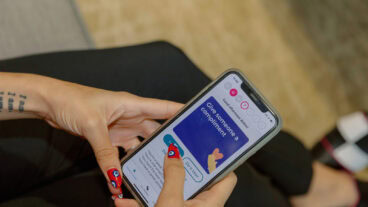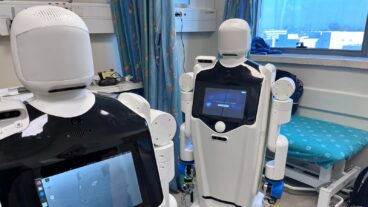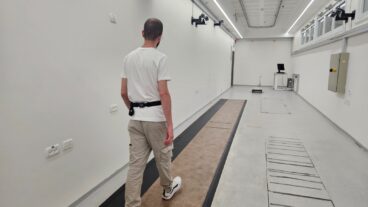Say goodbye to the eye patch. OphthoCare’s electronic glasses recently received FDA approval for treating amblyopia syndrome in children.Imagine what it’s like to be a child and told you have to wear an eye patch. And imagine what it’s like to be that child’s parent, having to constantly struggle with your son or daughter to wear the patch.
That scenario plays out over and over again with the thousands of children each year who are diagnosed with amblyopia – or as it’s commonly called – lazy eye syndrome. But in one of those ‘why didn’t anyone think of this before?’ developments, an Israeli company has devised a novel solution to treating the condition without the use of patches.
Beersheba-based OphthoCare had developed unique electronic glasses (Liquid Crystal Glasses – LCG) which function as an electronic shutter. The device, suitable for treatment of various ocular disorders and nerve stimulation applications, has recently received FDA marketing approval for treating lazy eye syndrome in children. It’s likely to revolutionize the treatment for Amblyopia – a medical disorder common in about 5 percent of children and is recommended to be treated between the ages of 3 and 8.
“There’s no such device that exists, and we hold the US patent,” exclaimed OpthoCare’s CEO Rafi Herzog. “It’s a completely new approach to treating Amblyopia and provides an excellent advancement in visual acuity.”
The LCG’s electronic shutter is incorporated into the optical refractive lens, and is controlled by preprogrammed microchip which is activated over the strong and healthy eye in short intervals. These ‘close-open’ sessions exercise the weak eye and force its use.
“We generate an electronic curtain with liquid crystal technology which closes the shutter over the strong eye, and forces the use of the weak eye. This closure takes place automatically and lasts maybe 10 to 15 seconds. Then it’s open for another 10-15 seconds,” Herzog told ISRAEL21c.
The ‘close-open’ exercises continue as long as the glasses are worn, he explained, and strengthens the amblyopic eye, improves the visual acuity and enhance binocular vision as well. The LCG has been tested in a successfully clinical study performed at three medical centers in Israel. The study had showed excellent efficacy, acceptance by children and parents and no side effects.
For Herzog, the results are especially rewarding. An electrical engineer with an MBA, Herzog has 25 years experience in the development and management of medical device companies. Together with Dr. Amir Ben Ezra he founded OpthoCare with a $500,000 investment from the Maayan Technology Ventures (formerly the Initiative Center of the Negev)
“The idea for the electronic glasses came from Amir, a young and brilliant MD. His father, David is a professor of pediatric opthamology at Hadassah Hospital in Ein Kerem, and Amir did his apprenticeship with him. He saw his father examining many children with lazy eye syndrome, and he slowly came up with the idea of glasses,” said Herzog.
Herzog said that it only took around eight months to develop the prototype, and the last year and a half were spent conducting clinical trials with 30 children at three centers in Israel ? Hadassah Ein Kerem, Sheba Medical Center and Meir Hospital in Kfar Sava.
“The results were very good – they showed significant improvement in the children’s sight and in their weak eye,” said Herzog. “Most importantly, from their feedback, children liked the glasses, and backed up the idea that it’s a desirable alternative to a patch. For them, they see it as a game ? with the glasses opening and closing.”
While it seems like glass shutters constantly opening and closing would be distracting to the wearer, Herzog says the clinical trials showed that it was simply not a factor for the children.
“From the results of our study, the children say it doesn’t bother them – they get used to it very quickly and don’t even notice it after a while,” he said.
And what about getting kids to wear the glasses?
“About 90% of children with lazy eye need to wear glasses anyway. So what we’re saying is: instead of glasses and patch, let’s combine them into one,” said Herzog. “The great thing for parents is that they don’t have to always be hounding their children to put the patch on ? the exercises work automatically ? we call it ‘as you go’ treatment. There’s nothing you have to manage.”
Exercise modality is adjustable via software and actual exercise time is recorded automatically in the microchip providing feedback to a “compliance unit” which is valuable to the ophthalmologist and is important part for further treatment prescription.
Via a small bedside charging device, this information is also presented to the parents and child to enable them to gauge if the device is being worn enough.
“If the child keeps to the schedule, he receives positive reinforcement in a smiley face that appears on the device ? or a sad face if it shows that he hasn’t worn it enough,” said Herzog. “From an educational point of view, it’s very child-friendly.”
Herzog said that the time that a child needs to wear the glasses varies, but the average is between one and two years until there’s a noticeable an improvement in sight. Then, there’s a maintenance period so the condition doesn’t come back.
After the successful trials and the FDA approval, OpthoCare is now in the process of raising funds for the production and marketing. They recently graduated from the Maayan incubator program and are around the world. The company plans to launch its product in early 2006.
“Now that we’ve received FDA approval we’re ready to produce and sell. We need to manufacture the commercial version,” said Herzog, adding that the company only has three employees and subcontracts out much of the work.
Maayan Technology managing director Tsvika Ben-Porat predicted that the company would reach $20 million in sales and make a large profit within three years. But any amount will pale compared to smile on a child’s face as they throw away their eye patch for good.












